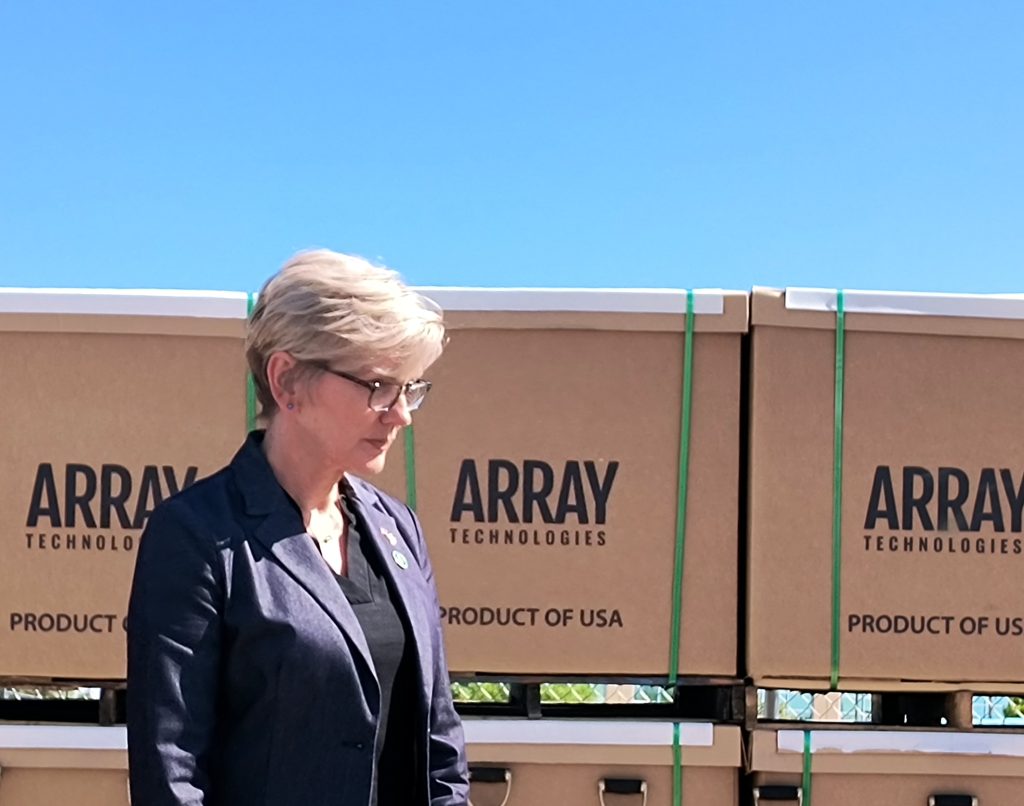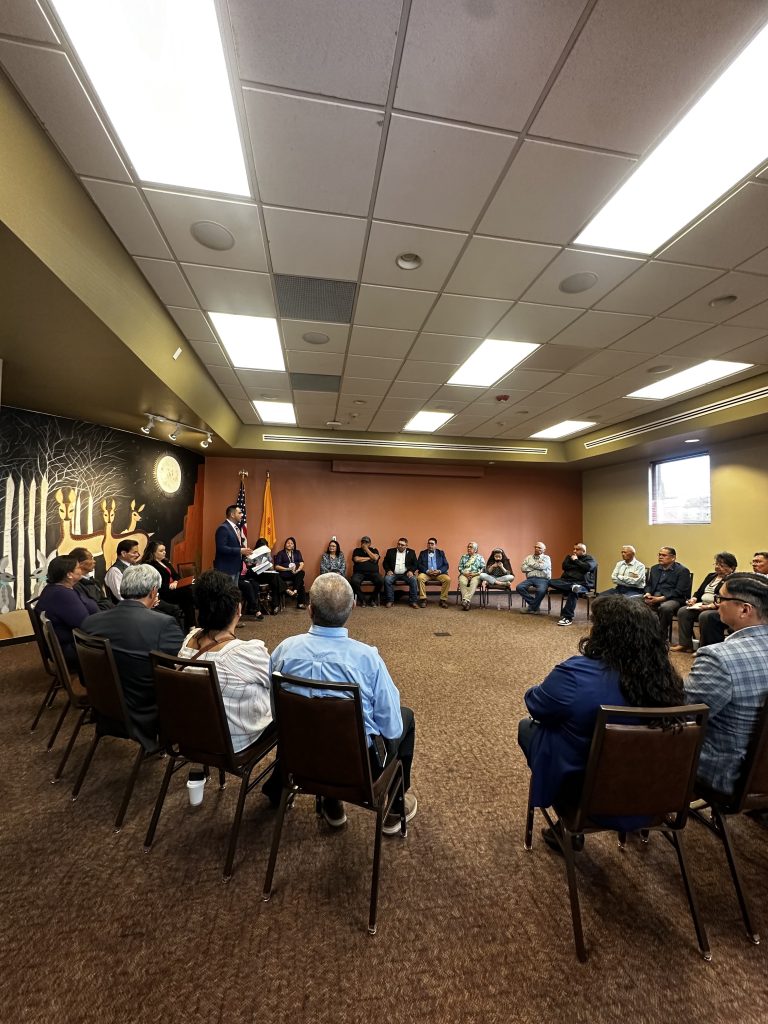Amid the energy transition, researchers are looking for ways to ensure low-income communities are not left behind.
Researchers from Stanford University say nonresidential rooftops could bridge some of the equity gaps if used in a community solar setup. The researchers published their findings in late March in the peer-reviewed journal Nature Energy.
“We are dedicated to studying solar, especially how to make the solar adoption more equitable,” Zhecheng Wang said.
Wang is one of the study’s coauthors and a postdoctoral fellow at the university’s Institute for Human-Centered Artificial Intelligence.
He said the team has a long history of investigating solar development and has built a dataset of where solar is being deployed throughout the United States.
That dataset is known as DeepSolar and it was constructed using machine learning. The team is using the DeepSolar dataset to examine the equity gap in solar and determine why certain communities are lagging behind.
Wang said the dataset provides the researchers with information such as GPS coordinates, size and installation dates for every solar installation in the country.
“That is constructed by applying AI on the remote sensing images to detect solar,” he explained.
Study results
While the researchers found that commercial rooftops in more affluent areas are more likely to have rooftop solar, that gap is significantly lower than the equity gap when it comes to residential solar. There is a 38 percent gap between the amount of electricity generated by nonresidential rooftop solar in affluent and disadvantaged communities compared to a 67 percent gap in residential rooftop solar.
Part of this equity gap comes from the fact that people with lower incomes are less likely to own their houses and are more likely to live in multi-family housing such as apartment complexes.
They looked both at the installations of nonresidential solar as well as the number of unused rooftops that would be good candidates for solar. Researchers examined the data for years 2006 through 2016 and then again for 2022.
Additionally, they calculated the average annual costs for producing solar in each area. Those can change from place to place. New Mexico, for example, has plenty of sunlight and therefore tends to have lower costs than many other states. Using nonresidential rooftops, the researchers placed those costs at 6.4 cents per kilowatt hour in New Mexico.
But even in northern states where there is less sunlight, the costs associated with solar are lower than residential electricity rates.
The researchers explored creating microgrids that would be powered by solar on building rooftops that are larger than 1,000 square meters, or about 3,200 square feet. They estimated that 63 percent of disadvantaged communities could meet at least 20 percent of their annual residential electricity demand by using solar power generated from arrays on those large, nonresidential rooftops.
The study was a follow up on past work.
“Previously, we found that there’s ingrained disparities in residential solar adoption,” Wang said.
The team of researchers previously studied the impact of tax incentives on the deployment of solar in low-income communities. They found that tax rebates don’t tend to spur adoption of rooftop solar in low-income communities, in part because lower income families often don’t see the same types of benefits from tax breaks.
Wang said that using nonresidential rooftops to generate solar power for nearby households could help bridge the equity gap but requires support from state policies.
He said that nonresidential rooftop solar tends to be more sensitive to policies as well as factors like the commercial entities’ revenue stream. In contrast, rooftop solar tends to be highly dependent on the homeowner’s income.
Commercial rooftops also tend to be larger, which means they can generate more electricity than a residential rooftop.
Wang described a situation in which the commercial entity could generate not only all the electricity to meet the business’s needs, but also additional electricity that could be sent to nearby households.
He said this would also increase energy security in disadvantaged communities. Having locally generated power would make it less likely that they would lose access to electricity during extreme weather or other climate change induced events.
Advantages and disadvantages in New Mexico
Andrew Stone, the president of NM People’s Energy Cooperative, said one advantage of using rooftops for community solar is that it reduces conflict.
NM People’s Energy Cooperative focuses on providing solar energy to people who rent or who cannot afford rooftop solar. In that way, Stone said the organization’s goals align well with the goals of New Mexico’s community solar program.
There tends to be very little, if any, opposition to adding solar panels on top of a big box store. Meanwhile, a solar project with battery storage in Santa Fe County that is not part of the community solar program has faced significant backlash from nearby residents who are concerned that battery fires may lead to devastating consequences due to proximity to natural gas infrastructure.
“Land use contention is a problematic thing, especially with so much of our land being Indigenous land with sacred components to it,” Stone said.
He said Albuquerque has strip malls with “tons and tons of roof.”
“Instead of creating land use contention with (agricultural) land, or possibly land that will be developed later, the roof is really a great idea,” he said.
Stone said that the nonresidential rooftops don’t necessarily have to be commercial businesses. He envisioned churches with rooftop solar that could provide energy to congregants.
Coalition for Community Solar Access Senior Regional Director of Policy and Government Affairs Kevin Cray said there are advantages of rooftop community solar, which would generally utilize nonresidential rooftops, though they could also be installed on apartment complexes.
He said using nonresidential rooftops as sites for community solar arrays has particularly been successful in the eastern United States where there tends to be a higher population density and less land available for large-scale community solar projects.
For example, Cray said New Jersey has almost exclusively rooftop arrays for community solar.
He said from a development perspective, placing the community solar arrays on rooftops may lead to lower lease rates for the developers and lower interconnection costs.
At the same time, rooftops have some disadvantages.
Cray said rooftop solar arrays produced less electricity than ground-mounted arrays. This is in part because ground-mounted arrays can be designed to track the path of the sun while rooftop arrays tend to be fixed and may not even be angled in an optimal way for energy production.
Stone said there have been developments to increase the amount of electricity rooftop solar generates, including what is known as bifacial solar panels. These arrays have photovoltaic cells on both the top and bottom of the panels.
“If you’re on a white roof, the photons are bouncing all around, and you can get even more efficiency out of that same square footage,” Stone said.
But, Cray said, there is a significant difference in how much solar a rooftop array can generate compared to a ground-mounted system.
“The losses that you’re looking at are upwards of 40 percent of the capacity,” Cray said.
That is important because New Mexico has a 200 megawatt cap on the amount of community solar that can be developed in the state.
“So if you have a capacity constraint program, such as New Mexico’s where there’s a limit of 200 megawatts, there might be a good argument to say we should really be prioritizing those 200 megawatts towards sites are going to have optimal production so that we create the most bill credits, the most benefits, the most opportunities to subscribe that we can with the limited available capacity,” Cray said.
At the same time, he said he would like to see some rooftop community solar.
“I think they present a great test case and would provide the (New Mexico Public Regulation Commission) useful information as they kind of think about the future of the program,” he said.
He said that moving toward rooftop community solar may come later on and that New Mexico’s community solar program is still in its early stages.





















